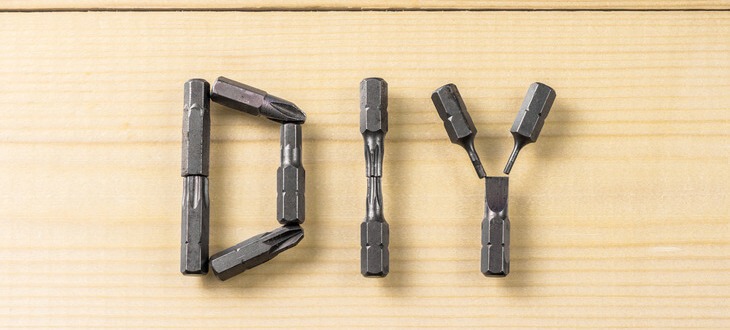Chrome plating is a popular technique for giving metal objects a shiny, durable finish. Whether you’re a DIY enthusiast or a metal artist, chrome plating can enhance the aesthetics and longevity of your projects. This blog post will explore whether chrome metal can be planted and a detailed step-by-step process for DIY chrome plating at home.
What is chrome metal?
Chrome is a lustrous and hard metal known for its shiny finish and resistance to corrosion. It is widely used in various industries, including automotive, aerospace, and home decor.
Benefits of Chrome Plating
There are many benefits of chrome plating, including:
- Aesthetic Appeal: Chrome provides a mirror-like finish that enhances the visual appeal of metal objects.
- Durability: It adds a protective layer that resists scratches and tarnishes.
- Corrosion Resistance: Chrome protects the underlying metal from rust and corrosion.
- Ease of Cleaning: Chrome surfaces are easy to clean and maintain.
Can you plate chrome?
Types of Metal Suitable for Chrome Plating
Chrome plating can be applied to a variety of metals, including:
- Steel: Steel is typical in automotive parts and household tools.
- Aluminum: This is used in home decor and some vehicle parts.
- Brass: Often found in musical instruments and plumbing fixtures.
- Copper: Copper is used in electrical components and decorative items.
Limitations and Considerations
While many metals can be chrome-plated, some materials require specific preparation techniques. For example, aluminum often needs an undercoating of nickel to ensure proper adhesion of the chrome layer. Also, the size and shape of the object can influence the plating process. The more significant or intricately shaped items may require professional equipment.
Materials Needed for DIY Chrome Plating
Before you start your DIY chrome plating project, gather the following materials:
- Cleaning supplies: Soap, water, and degreaser
- Sandpaper: Various grits for surface preparation
- Anode and cathode: Typically made of stainless steel or lead
- Chrome plating solution: Can be purchased from specialty suppliers
- Power supply: A DC power source with adjustable voltage
- Safety gear: Gloves, goggles, and a respirator
- Containers: Non-reactive plastic or glass containers for the plating solution
Steps to DIY Chrome Plate Metal
Step 1: Preparation
- Clean the Metal Object: Thoroughly clean the metal object using soap and water to remove dirt or grease. Follow up with a degreaser to ensure the surface is free of contaminants.
- Sand the Surface: Use sandpaper to smooth out imperfections and create a slightly rough surface. This helps the chrome adhere better.
Step 2: Setup
- Prepare the Anode and Cathode: Attach the anode (positive electrode) and cathode (negative electrode) to the power supply.
- Mix the Plating Solution: Follow the manufacturer’s instructions to prepare the chrome plating solution. Use non-reactive containers to avoid contamination.
Step 3: Electroplating Process
- Submerge the Metal Object: Place the metal object (cathode) into the plating solution.
- Insert the Anode: Position the anode in the solution without touching the metal object.
- Apply Power: Turn on the power supply and adjust the voltage according to the plating solution’s specifications. The current will cause chromium ions to deposit onto the metal object, creating a thin, even layer.
Step 4: Post-Plating Finishing
- Rinse and Dry: After achieving the desired plating thickness, remove the metal object from the solution carefully. Rinse it thoroughly with water and dry it with a clean cloth.
- Polish the Surface: Polishing the chrome-plated surface with a soft cloth or buffer enhances its shine and smoothness.
Safety Precautions for Chrome Plating
Chrome plating involves handling chemicals and electrical equipment, so it’s crucial to follow safety guidelines:
- Wear Protective Gear: Always wear gloves, goggles, and a respirator to protect yourself from chemical exposure.
- Work in a Well-Ventilated Area: Ensure proper ventilation to avoid inhaling harmful fumes.
- Handle Chemicals With Care: Follow all safety instructions the chemical manufacturer provides.
Chrome Plating Issues and Troubleshooting
Uneven Plating
- Cause: Improper cleaning or surface preparation.
- Solution: Ensure the metal object is thoroughly cleaned and sanded before plating.
Peeling or Flaking
- Cause: Poor adhesion between the metal and chrome layer.
- Solution: Apply an appropriate undercoat (e.g., nickel for aluminum) and follow proper plating procedures.
Dull Finish
- Cause: Insufficient polishing or incorrect plating solution concentration.
- Solution: Polish the plated object thoroughly and verify the solution’s concentration.
Chrome plating can significantly enhance the appearance and durability of metal objects, making it a valuable skill for DIY enthusiasts and professionals alike. You can achieve stunning results in your projects by understanding the basics of chrome metal, selecting suitable materials, and following a step-by-step process. Remember to prioritize safety and quality to ensure a successful chrome plating experience.
Visit Tampa Steel & Supply for Quality Metal and Metal Processing Services
Do you need help with metalworking and keeping your metal fresh? The experienced professionals at Tampa Steel & Supply are here to help. We provide the highest quality of services to our customers.
Request a Quote Online
Or Call Tampa Steel & Supply at (813) 241-2801

